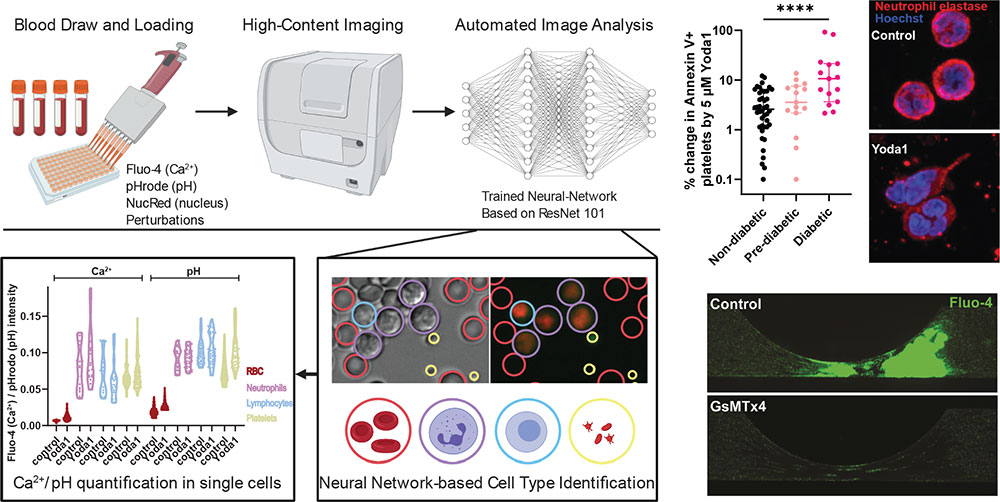An ion channel complicates clots in diabetes
Patients with diabetes are at increased risk of thrombosis. Zhu et al. show that the mechanosensitive ion channel PIEZO1 is dysregulated in hematopoietic lineage cells during hyperglycemia. The increased PIEZO1 triggered flow-dependent prothrombotic responses in platelets, RBCs, and neutrophils in peripheral blood samples from patients with diabetes. Pharmacological inhibition of the channel conversely protected against clot formation in the patient blood samples and in a hyperglycemic zebrafish model. This work demonstrates that PIEZO1 drives a mechanothrombotic pathway in diabetes and identifies possible therapeutic strategies for follow-up study.
Abstract
Thrombosis is the leading complication of common human disorders including diabetes, coronary heart disease, and infection and remains a global health burden. Current anticoagulant therapies that target the general clotting cascade are associated with unpredictable adverse bleeding effects, because understanding of hemostasis remains incomplete. Here, using perturbational screening of patient peripheral blood samples for latent phenotypes, we identified dysregulation of the major mechanosensory ion channel Piezo1 in multiple blood lineages in patients with type 2 diabetes mellitus (T2DM). Hyperglycemia activated PIEZO1 transcription in mature blood cells and selected high Piezo1–expressing hematopoietic stem cell clones. Elevated Piezo1 activity in platelets, red blood cells, and neutrophils in T2DM triggered discrete prothrombotic cellular responses. Inhibition of Piezo1 protected against thrombosis both in human blood and in zebrafish genetic models, particularly in hyperglycemia. Our findings identify a candidate target to precisely modulate mechanically induced thrombosis in T2DM and a potential screening method to predict patient-specific risk. Ongoing remodeling of cell lineages in hematopoiesis is an integral component of thrombotic risk in T2DM, and related mechanisms may have a broader role in chronic disease.
Read the whole article at www.science.org

